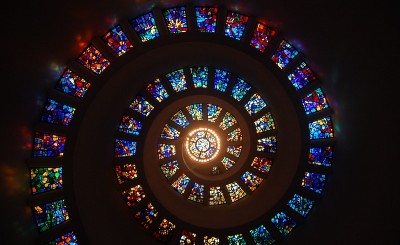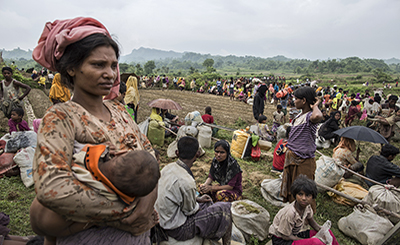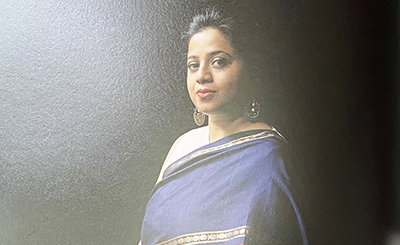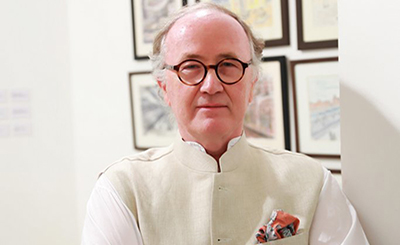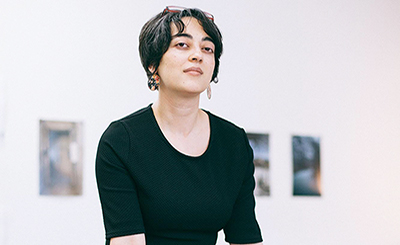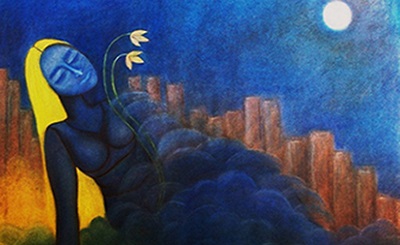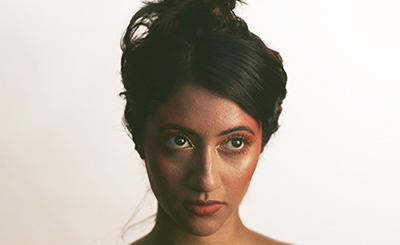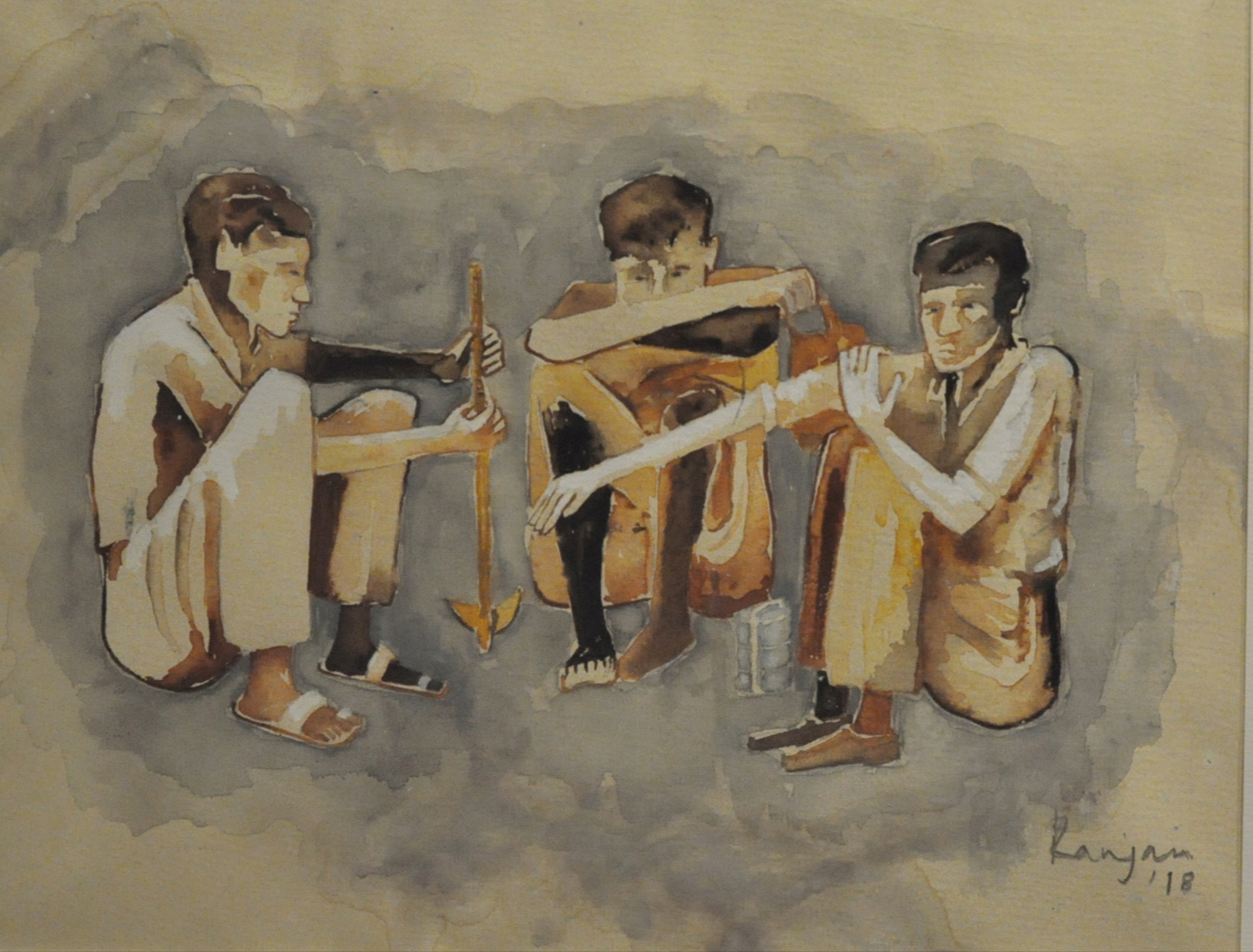
‘Intezaar’ (Waiting), Ranjan Kaul
‘Rise like Lions after slumber
In unvanquishable number
Shake your chains to earth like dew
Which in sleep had fallen you-
Ye are many- they are few.’ — Percy Bysshe Shelley, ‘The Mask of Anarchy’
‘The Beggar’s Rags, fluttering in Air,
Does to Rags the Heavens tear.’ — William Blake, ‘Auguries of Innocence’
We have driven through the night to catch Ranjan Kaul’s fifth solo show, ‘Within, Without’. Lightning’s forked tongues illuminated mountains all the way from Manali to Chandigarh. A polluted dawn sky from thereon to Delhi yielded nothing but dull grey, so it was a true wake-up call to colour that greeted us as we entered the India Habitat Centre’s Visual Arts Gallery.
Emerging from behind a vast bouquet of purple flocks, Ranjan was kind enough to take time out from the busy show to welcome us and show us around. Until this point, I had only seen the paintings as tiny thumbnails on a backlit screen and the sudden depth, vibrancy and painterly techniques filled me with pressing questions.
I ask him if he makes an intellectual choice about colour when he is working on a canvas. For example, does he work to any colour theories or have symbolic associations with certain colours that he would like the viewer to pick up on? “My choice of colour is completely instinctual and not pre-planned — I don’t believe in following any colour ‘theories’ — though yes, in some instances the colours do have symbolic associations,” he says, adding that he picks up on the use of the colour red throughout the show, especially its association with the women — the heroines — of the works.
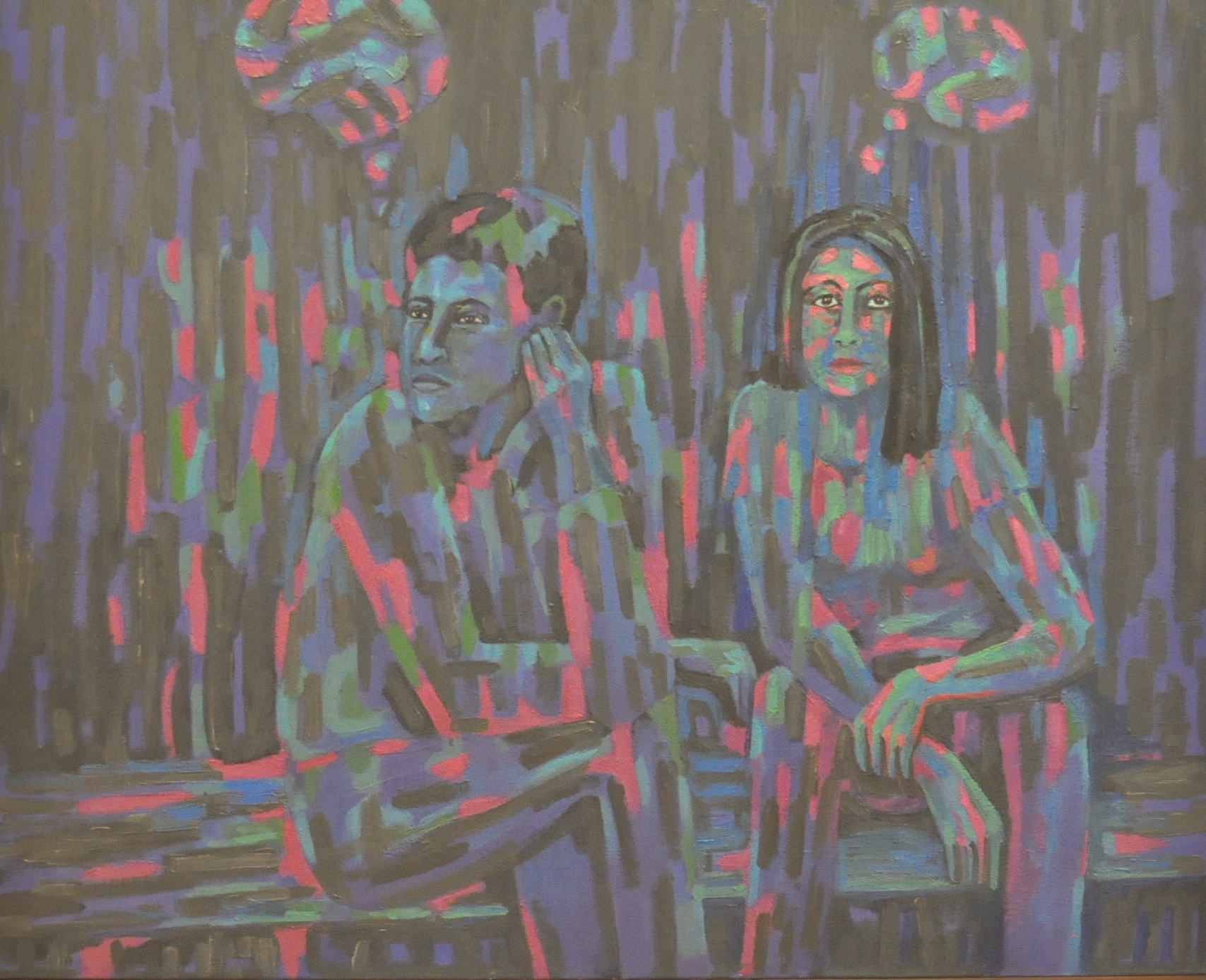
Disrupted Love, Ranjan Kaul
In Kaul’s life studies of sex workers, the ‘Ladies in Waiting’ and women in ‘Every Night’ seem to drip blood, sweat and rubies; so vivid are the reds, oranges and complimentary blues, made emotionally tangible through choice of palette. We sense the heightened frisson of dress-up, the boredom, the waiting, the gloom of an unloving act.
Yet in Kaul’s latest series of allegorical paintings, loosely based on Shelley’s poem ‘The Mask of Anarchy’, the figure of ‘Hope’ often wears red, too. Perhaps then, Kaul means it to represent courage and a universal love for all humanity as well as a temporal, more obvious means to an end. I’m intrigued to see actual lines and whole verses from Shelley’s poem painted into ‘The Mask of Anarchy’ series, and I wonder what kind of reaction or response Kaul intends the painted word to have upon his viewers. Does ‘reading’ a painting change our way of ‘viewing’ it? “The lines from the poem are included for the benefit of viewers who may not have read the poem. In a couple of cases though I’ve added a few lines of my own (e.g. and ‘sold out to oligarchs’ at the bottom of the painting titled ‘Murder’) — thus, I’ve juxtaposed images and words from the poem with imagery from contemporary times. This is what I’ve done — I guess the effect will vary from viewer to viewer,” he says.
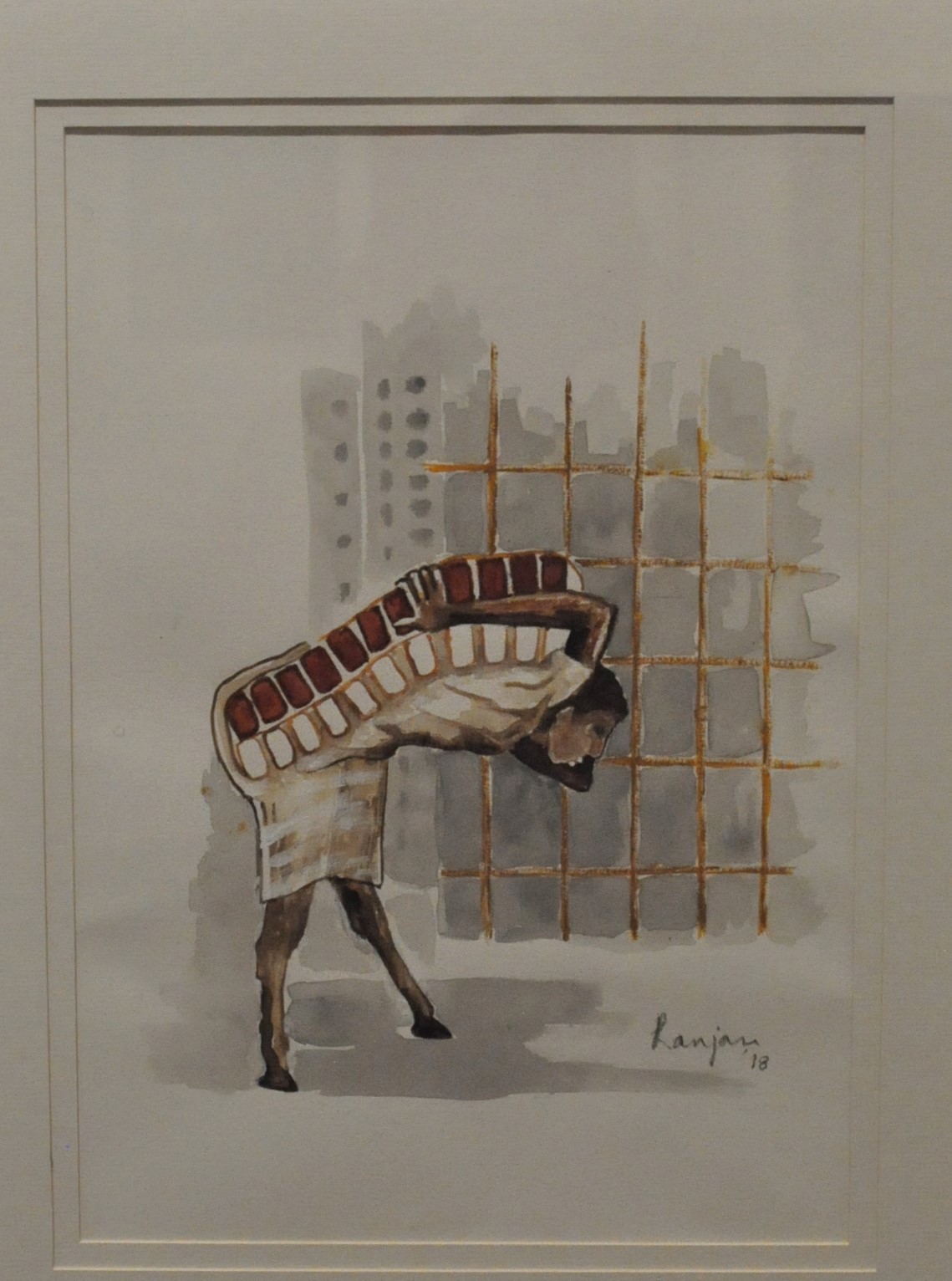
Co Lateral Damage, Ranjan Kaul
Even if we would prefer to turn away from sickly green faced Anarchy, galloping head-on towards us on his black buffalo of death, the inclusion of word as part of the composition draws us in, as to a book we need to read more closely. Unafraid of treating us to subject matter, we would sometimes prefer not to reflect upon. I wonder how Ranjan begins a composition: does he work from sketches, photographs, or purely from imagination? “I used to go to railway stations and hone my life-drawing skills there during my lunch hour and after work. Now when I work, I compose from imagination, though I do sometimes draw on previously sketched figures,” he asserts.
The paintings of ‘Disrupted’ relationships recall the recent pandemic and all the ensuring chaos that followed in its wake and looking more closely, I wonder how Kaul’s technique of daubed colour seems to fragment the very surface it is describing. In ‘Scintilla of Hope’, vertical purple streaks seem to hang down like a curtain, veiling the central figure from our view until we are not altogether sure if we can catch a glimpse of elusive hope at all. In ‘Grief’, a family is painted entirely mournful grey, picked out in red and ochre daubs.
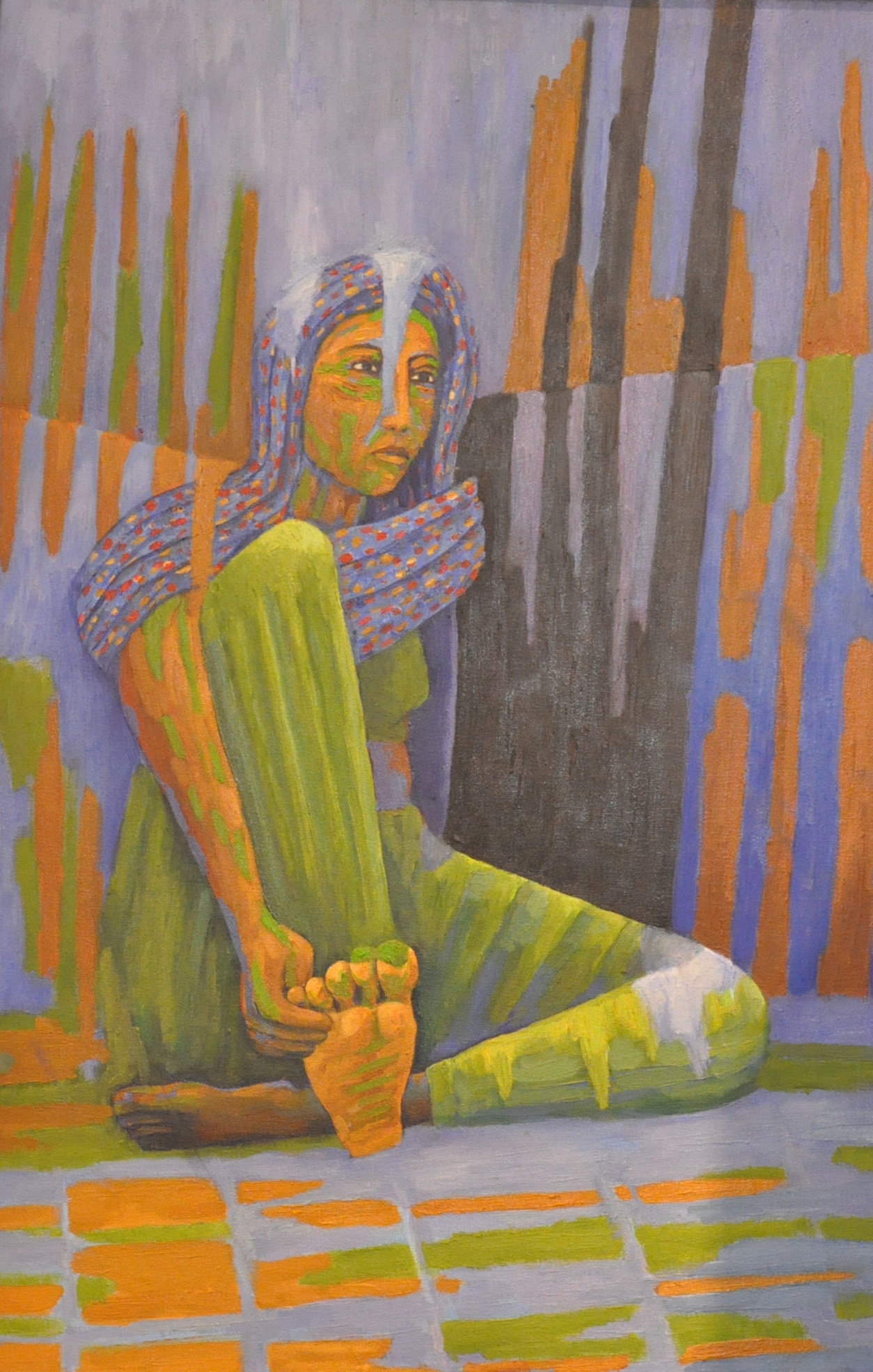
Scintilla of Hope, Ranjan Kaul
It is here that Kaul brings my attention to his playful relationship with texture as well as colour: in ‘Of Holes — The Elephant in the Room’, for example, in which Dalit workers (whose role it is to scrape and scrub clean society’s sewage systems with no protective clothing or equipment), marble dust has been mixed with acrylic gel and watered down to give the canvas both texture and its particular elephant hide colour; in ‘Home’ 1 & 2, sand is mixed in with acrylic gel; and in ‘After Dark’, Kaul explains how the whole canvas was painted at speed with only a palette knife. By applying multiple colours to the knife at once, the kinesthetic vibrancy and edgy mood of the piece is created.
There is another technique I particularly appreciate in this show: Kaul’s use of watercolour. As a long-time violator of watercolour rules, I delight in his delicacy of brushstroke, the pathos such simplicity of palette and discipline of line evokes in the viewer.
The whimsical, yet piercing truths of ‘Flight to Survival’, in which a flock of human-headed bar winged geese seasonally migrating from the city to sow seeds in their home village; or ‘Co lateral Damage’, in which a donkey-hooved woman carries bricks on her back, bent horizontal by her load; in the bleak simplicity of ‘Mochi’, a Dalit Cobbler or the lassitude of three unemployed figures in ‘Intezaar’ (Waiting), the melancholy sleep of bicycle rickshaw drivers in ‘Blue Bends’, will work on any wall, anywhere and at all times.
Kaul concludes: “My later works are often pure imagination…based on an idea that I develop on canvas — but no not from dreams, visions or nightmares.” The images before our eyes are Kaul and our very own realities, both within and without. You walk away from this exhibition with your eyes — and hopefully your heart — opened a little wider.
The exhibition is currently on at Urban Fringe — the underground studio F-15 Basement, Okhla Phase I, New Delhi from April 12 to 22, 2024
More from Arts
Comments
*Comments will be moderated




